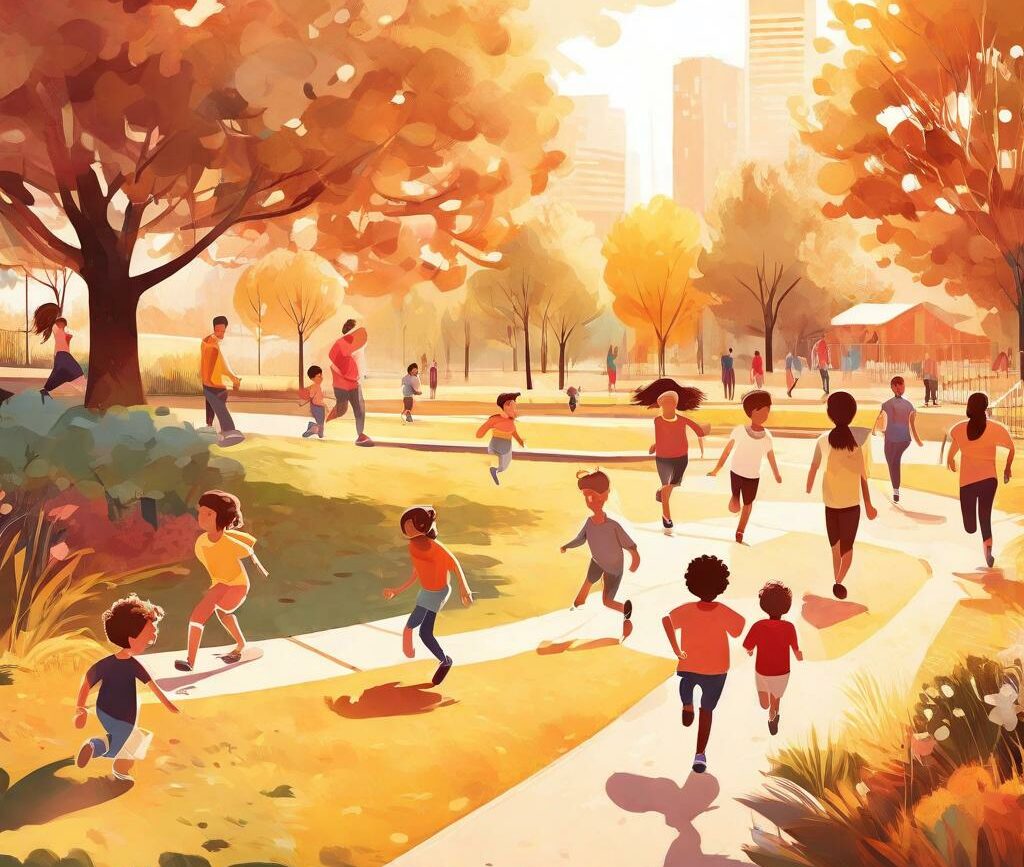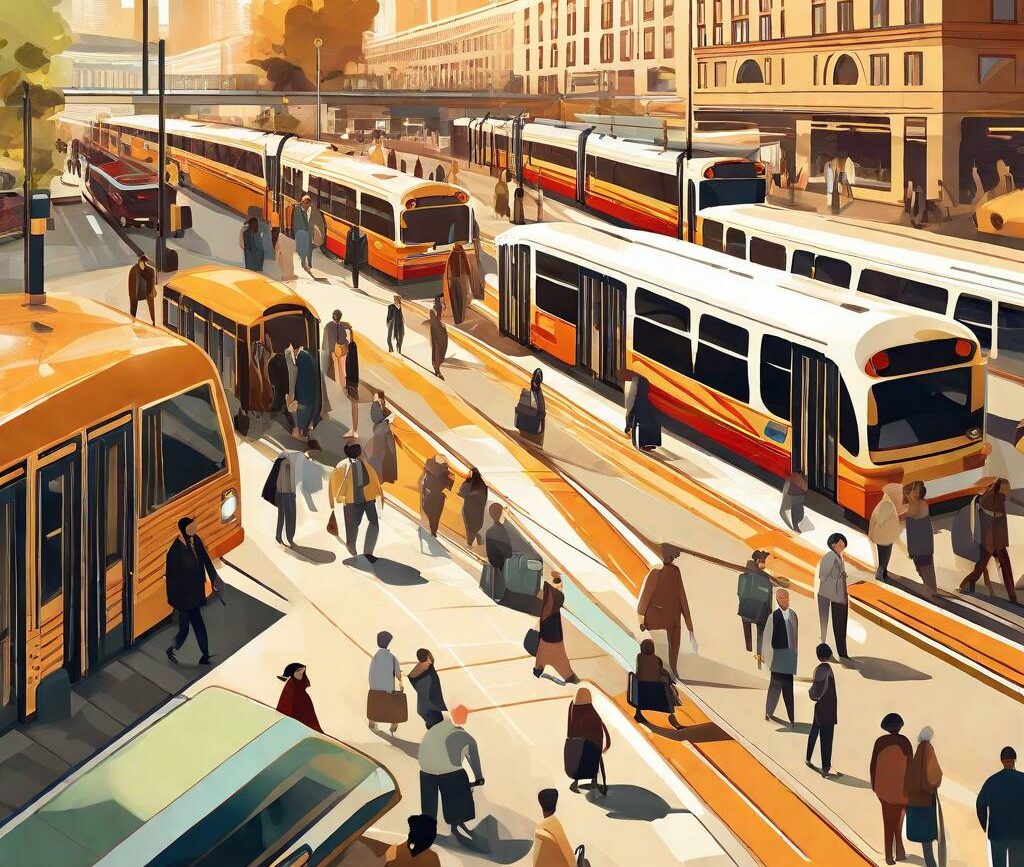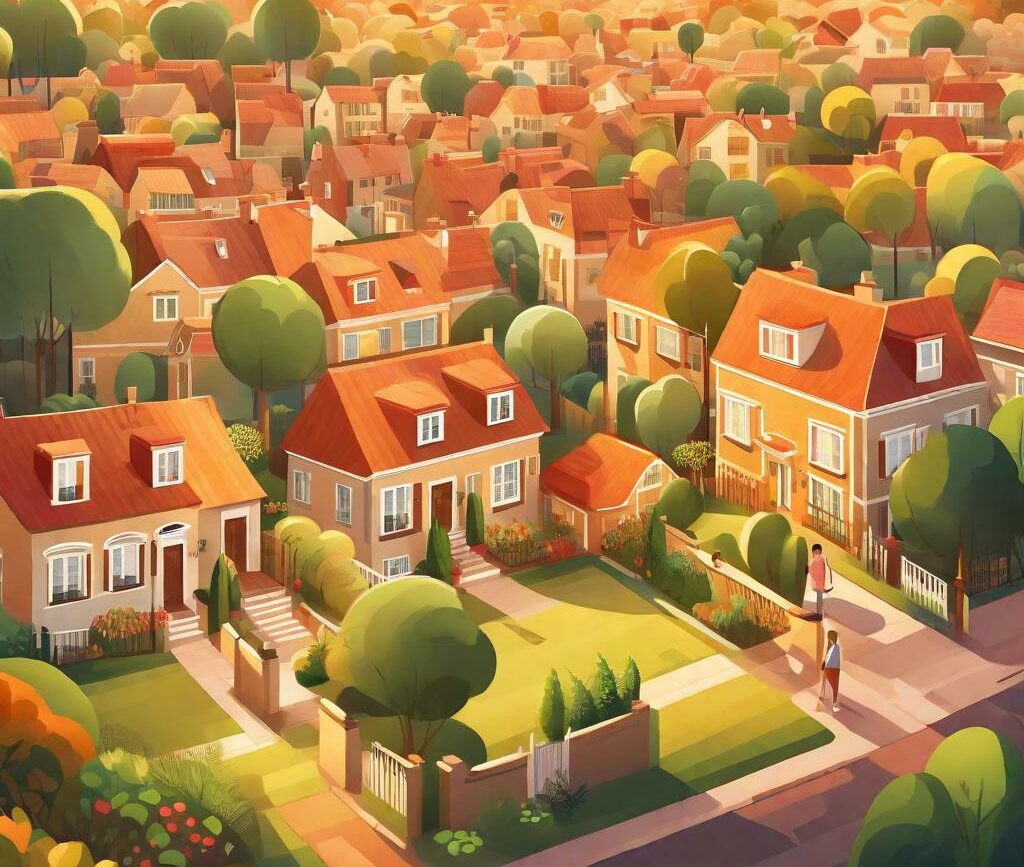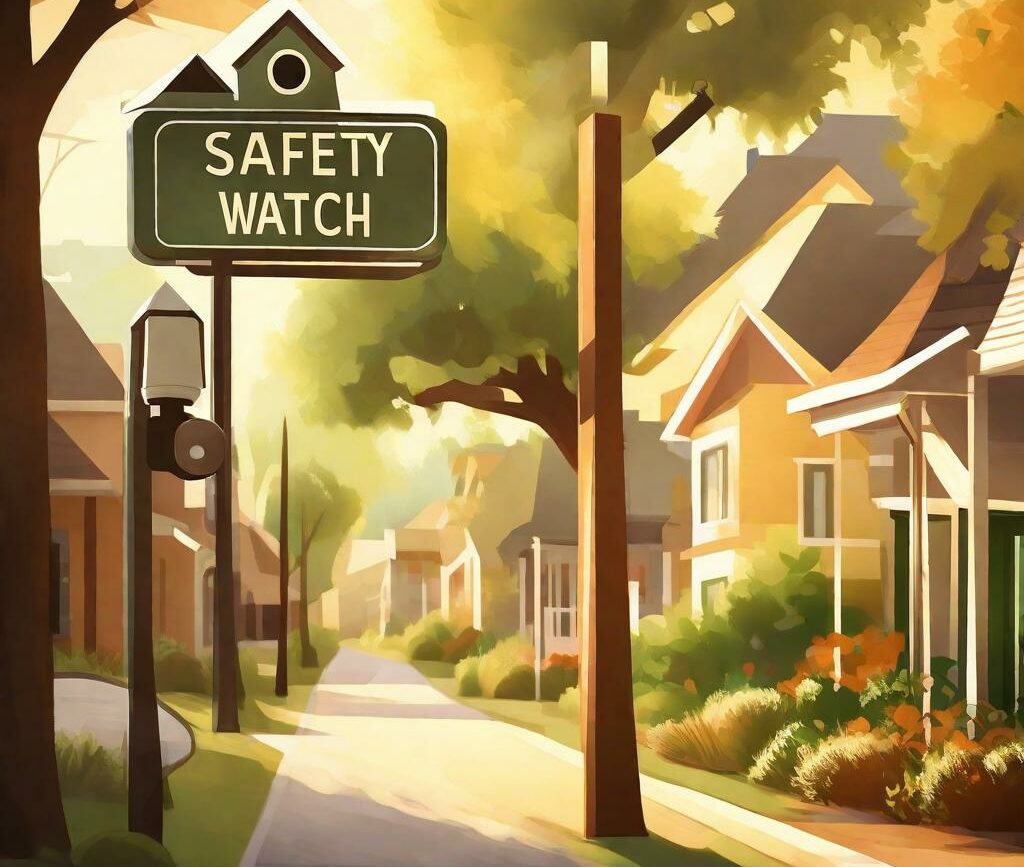
When it comes to finding the perfect property, buyers are no longer satisfied with just the specifications and aesthetics of the house. In today’s real estate market, neighborhood information has become essential in property listings. Homebuyers want to know more about the neighborhood they will potentially be moving into. From safety and amenities to transportation and community, understanding the neighborhood can greatly enhance a property listing and attract potential buyers. Let’s explore the significance of neighborhood information in property listings and why it has become increasingly important in recent years.
The Impact of Neighborhood Safety
A. Evaluating Crime Rates and Safety Measures
One of the primary concerns for homebuyers is the safety of the neighborhood they are considering. People want to live in a place where they feel secure and can raise their families without worrying about their well-being. Evaluating crime rates and safety measures is crucial in providing accurate neighborhood information.
1. Assessing Crime Statistics and Trends
Understanding the crime statistics and trends of a neighborhood helps paint an accurate picture of the safety levels. Buyers want to know if the area has a high crime rate or if it has seen a decline in criminal activity over the years. This information allows them to make informed decisions about the safety of their potential living environment.
2. Neighborhood Watch Programs and Security Measures
Neighborhood watch programs and security measures play a significant role in promoting safety within a community. Buyers prefer neighborhoods that have active watch programs and visible security measures in place. These initiatives indicate a proactive approach to maintaining a safe neighborhood and provide reassurance to potential buyers.
3. Proximity to Emergency Services and Police Stations
Living close to emergency services and police stations is an added advantage for homebuyers. In case of any emergencies, having quick access to medical facilities and law enforcement can literally be a lifesaver. Neighborhoods that boast such convenience are highly sought after by buyers.
B. Safe Neighborhood Features
Apart from crime rates and safety measures, certain features contribute to the perception of a safe neighborhood:
1. Well-lit Streets and Adequate Street Maintenance
Well-lit Streets and Adequate Street Maintenance: Well-lit streets and regular maintenance give a sense of care and security, making buyers feel comfortable walking around the neighborhood even at night.
2. Reliable Fire Department Services and Resources
Reliable Fire Department Services and Resources: The presence of a nearby fire department with prompt services ensures that homeowners will receive timely assistance in the event of a fire emergency.
3. Neighborhood Presence of Security Systems and Cameras
Neighborhood Presence of Security Systems and Cameras: The visibility of security systems, surveillance cameras, and gated entrances instill a sense of security and deter potential criminals.
C. The Role of Safe Neighborhoods in Property Value
Safe neighborhoods have a direct impact on property value due to increased demand. The perception of safety enhances the desirability of a neighborhood, leading to higher property valuations.
1. Positive Influence on Home Valuation
Positive Influence on Home Valuation: Properties located in safe neighborhoods tend to have higher valuations. Homebuyers are willing to pay a premium for the peace of mind that comes with living in a secure environment.
2. Increased Attraction for Families and Investors
Increased Attraction for Families and Investors: Families prioritize the safety and security of their loved ones when searching for a home. Investors, too, prefer neighborhoods with lower crime rates as they hold long-term investment potential.
3. Long-term Benefits for Property Sellers and Buyers
Long-term Benefits for Property Sellers and Buyers: Sellers benefit from the increased property values in safe neighborhoods, while buyers can expect a reliable return on investment in the future due to sustained demand.
Evaluating Neighborhood Amenities

Neighborhood amenities, such as education facilities, healthcare services, and recreational spaces, greatly impact the quality of life for residents. Homebuyers actively seek out information about these amenities when looking for properties.
A. Access to Education Facilities
1. Proximity to Schools, Colleges, and Universities
Proximity to Schools, Colleges, and Universities: Families with school-going children prioritize living in close proximity to educational institutions. Easy access to schools, colleges, and universities reduces commuting time and provides added convenience.
2. Educational Ratings and Standards
Educational Ratings and Standards: Knowing the quality of education offered by nearby schools is crucial for parents. Educational ratings and standards give them confidence in their children’s educational journey.
3. Availability of Parks and Recreational Spaces for Children
Availability of Parks and Recreational Spaces for Children: Open and green spaces, playgrounds, and parks within the neighborhood provide children with opportunities for physical activities and social interaction.
B. Healthcare Services and Facilities
1. Accessible Hospitals, Clinics, and Specialist Centers
Accessible Hospitals, Clinics, and Specialist Centers: Quick access to quality healthcare services is a vital consideration for homebuyers. Having hospitals, clinics, and specialist centers nearby ensures timely medical attention when needed.
2. Quality Ratings for Healthcare Providers
Quality Ratings for Healthcare Providers: The quality ratings of healthcare providers give buyers insight into the reputation and competence of medical professionals in the area.
3. Availability of Pharmacies and Emergency Medical Services
Availability of Pharmacies and Emergency Medical Services: The presence of local pharmacies and emergency medical services adds convenience and peace of mind for residents.
C. Recreational Facilities and Entertainment
1. Parks, Sports Fields, and Trails
Parks, Sports Fields, and Trails: The availability of parks, sports fields, and walking trails promotes an active and healthy lifestyle. These recreational spaces encourage residents to engage in outdoor activities and connect with nature.
2. Shopping Centers, Restaurants, and Entertainment Options
Shopping Centers, Restaurants, and Entertainment Options: Buyers appreciate neighborhoods with a variety of shopping centers, restaurants, and entertainment options within a reasonable distance. These amenities contribute to a vibrant and enjoyable living experience.
3. Cultural Venues and Community Events
Cultural Venues and Community Events: Cultural venues, such as museums, theaters, and art galleries, foster a sense of community and provide opportunities for cultural enrichment and entertainment.
Transportation and Infrastructure in the Neighborhood

Transportation and infrastructure play a significant role in daily life. Buyers evaluate the convenience and accessibility of transportation options before making a decision.
A. Commute and Access to Transportation
1. Public Transportation Availability and Efficiency
Public Transportation Availability and Efficiency: The availability of public transportation, such as buses, trains, or subways, is a key consideration for buyers who prefer alternative modes of transportation.
2. Proximity to Major Highways and Road Networks
Proximity to Major Highways and Road Networks: Easy access to major highways and well-connected road networks simplifies commuting and provides convenient travel options.
3. Traffic Conditions and Ease of Commute
Traffic Conditions and Ease of Commute: Homebuyers appreciate neighborhoods with smooth traffic flow and short commute times. Minimal congestion and reasonable travel distances make daily routines more manageable.
B. Infrastructure Development
1. Neighborhood Development Plans and Projects
Neighborhood Development Plans and Projects: Information about ongoing or future development plans and projects in the neighborhood helps buyers visualize the growth potential of the area.
2. Availability of Essential Services like Electricity and Water
Availability of Essential Services like Electricity and Water: Reliable utility services, such as electricity and water supply, are crucial for the comfort and convenience of residents. Buyers seek out neighborhoods with stable infrastructure in this regard.
3. Future Expansion or Upgrades in the Infrastructure
Future Expansion or Upgrades in the Infrastructure: Buyers often look for neighborhoods that show potential for expansion or future infrastructure upgrades. These factors can positively impact property value over time.
C. Transportation and Infrastructure’s Influence on Property Listings
The convenience and accessibility offered by transportation and infrastructure have a profound influence on property listings for several reasons:
1. Convenient Lifestyle and Accessibility
Convenient Lifestyle and Accessibility: Properties located in well-connected neighborhoods provide residents with easy access to workplaces, schools, healthcare facilities, and recreational spaces. This convenience adds value to the property and attracts potential buyers.
2. Investment Opportunities in Development Zones
Investment Opportunities in Development Zones: Neighborhoods with planned infrastructure upgrades or development projects often present attractive investment opportunities. Buyers looking for long-term potential may consider these areas for future property value appreciation.
3. Property Value Reflecting Ease of Transportation
Property Value Reflecting Ease of Transportation: Improved transportation infrastructure positively affects property values. Buyers are willing to invest more in neighborhoods with excellent transportation infrastructure as it enhances their quality of life.
Neighborhood Culture and Diversity

The culture and diversity of a neighborhood contribute to its unique personality and appeal. Buyers appreciate the social fabric and community engagement that comes with certain neighborhoods.
A. Cultural Communities and Diversity
1. Ethnic and Cultural Diversity in the Neighborhood
Ethnic and Cultural Diversity in the Neighborhood: A diverse neighborhood offers a variety of perspectives, experiences, and cultural events. Buyers seeking a multicultural environment often gravitate towards neighborhoods that celebrate diversity.
2. Celebrations and Festivals
Celebrations and Festivals: Neighborhoods that host celebrations and festivals bring the community together, fostering a vibrant atmosphere and providing residents with opportunities to engage with different cultural traditions.
3. Social and Community Groups
Social and Community Groups: Social and community groups bring residents together, enabling them to form connections, build friendships, and actively participate in various community initiatives.
Community Engagement and Involvement
B. Community Engagement and Involvement
1. Local Government Participation and Initiatives
Local Government Participation and Initiatives: Neighborhoods that actively engage with local government and participate in community initiatives tend to have a stronger sense of community and better amenities.
2. Volunteering and Non-Profit Organizations
Volunteering and Non-Profit Organizations: The presence of non-profit organizations and volunteer opportunities within a neighborhood indicate an engaged and caring community. Buyers value such neighborhoods for their philanthropic spirit.
3. Neighborhood Bonds and Relationships
Neighborhood Bonds and Relationships: The relationships and bonds formed within a neighborhood create a supportive and caring environment. Buyers seeking a close-knit community often prioritize neighborhoods with a strong sense of camaraderie.
C. Impact on Property Buyers and Residents
The cultural fabric and community engagement in a neighborhood have several positive effects on property buyers and residents:
1. Quality of Life and Sense of Belonging
Quality of Life and Sense of Belonging: A vibrant neighborhood culture enhances the overall quality of life for residents and fosters a sense of belonging. Buyers appreciate neighborhoods that offer a welcoming and inclusive environment.
2. Benefits of a Vibrant Community
Benefits of a Vibrant Community: Socializing, participating in community events, and forming friendships are essential aspects of a vibrant community. Buyers recognize these benefits and actively seek neighborhoods that can provide them.
3. Potentials for Cultural Experiences and New Connections
Potentials for Cultural Experiences and New Connections: Living in a diverse neighborhood opens doors to cultural experiences, new perspectives, and the opportunity to forge connections with people from various backgrounds.
Summary

In today’s real estate market, neighborhood information has become vital for property listings. From safety and amenities to transportation and community, buyers seek detailed insights about neighborhoods before making a purchase. The impact of neighborhood safety, evaluating amenities, transportation and infrastructure, and the presence of a vibrant community all play significant roles in attracting potential buyers. Providing detailed and accurate neighborhood information enhances property listings and benefits buyers, sellers, and real estate agents alike.
FAQs (Frequently Asked Questions)

To address common queries about the significance of neighborhood information in property listings, here are some frequently asked questions:
A. Why is neighborhood information essential for property listings?
Neighborhood information is essential because it helps buyers gauge the safety, amenities, transportation options, and community engagement of a potential living environment. By having access to this information, buyers can make informed decisions that align with their preferences and needs.
B. How can I obtain detailed and accurate neighborhood information?
Obtaining detailed and accurate neighborhood information can be done through various sources. Real estate agents, local government websites, and online platforms that focus on neighborhood data are great places to start. Additionally, visiting the neighborhood, interacting with residents, and researching local community events can provide invaluable insights.
C. What are the top factors to consider when evaluating a neighborhood for a property purchase?
When evaluating a neighborhood for a property purchase, important factors to consider include safety, amenities (such as education and healthcare facilities), transportation options, infrastructure development, and community engagement. Each of these factors contributes to the overall desirability and lifestyle offered by a neighborhood.
D. How does neighborhood information influence property value?
Neighborhood information influences property value by generating demand. Safe neighborhoods, proximity to amenities, convenient transportation options, and a vibrant community all contribute to the desirability and perceived value of a property. Buyers are willing to pay a premium for properties located in neighborhoods that offer these features.
E. Are online neighborhood rating platforms reliable and trustworthy?
Online neighborhood rating platforms can be reliable and trustworthy sources of information, but it’s essential to verify the credibility and accuracy of the data provided. Cross-referencing multiple sources and exploring different platforms can help ensure the reliability of the information obtained.

